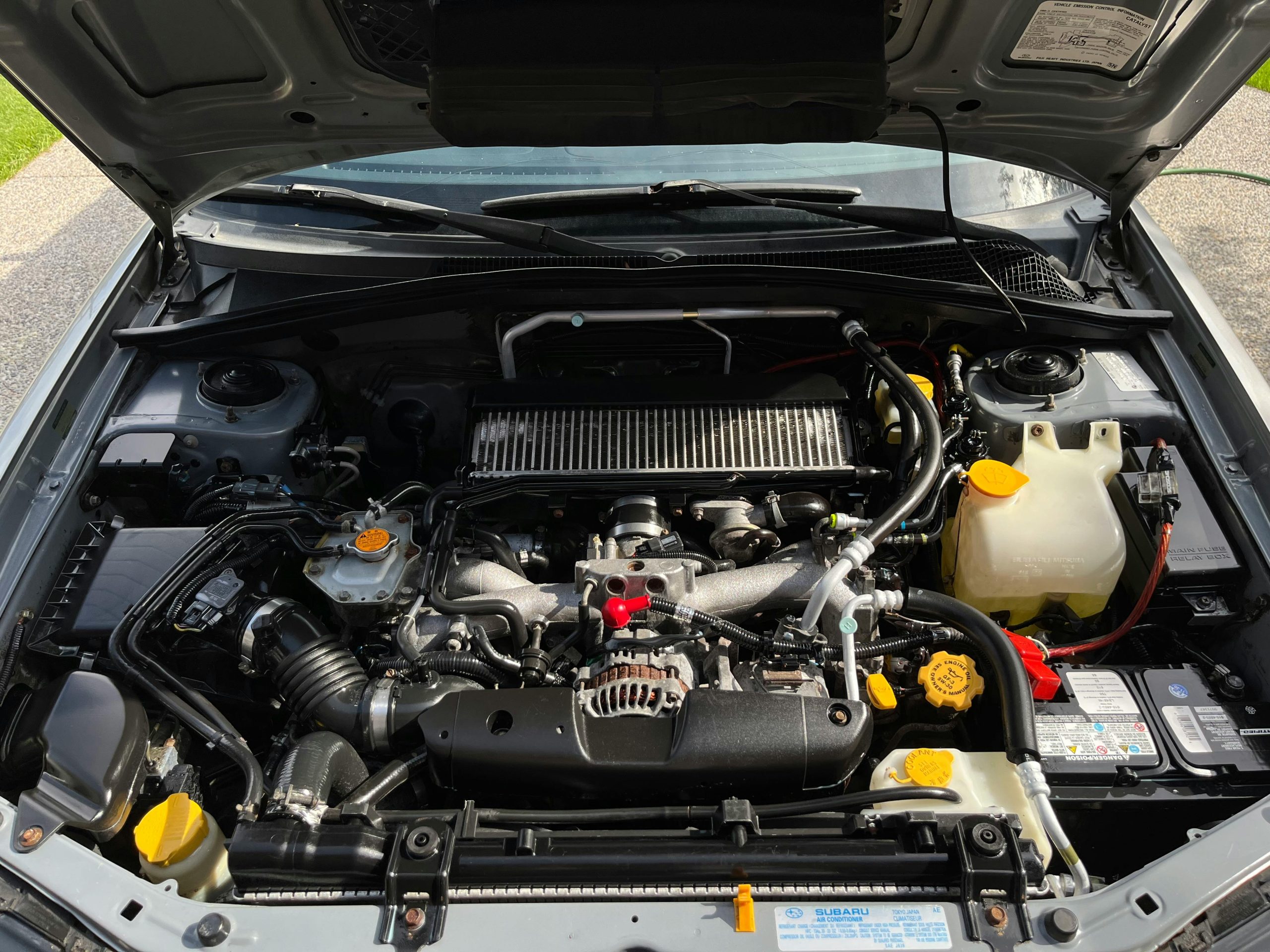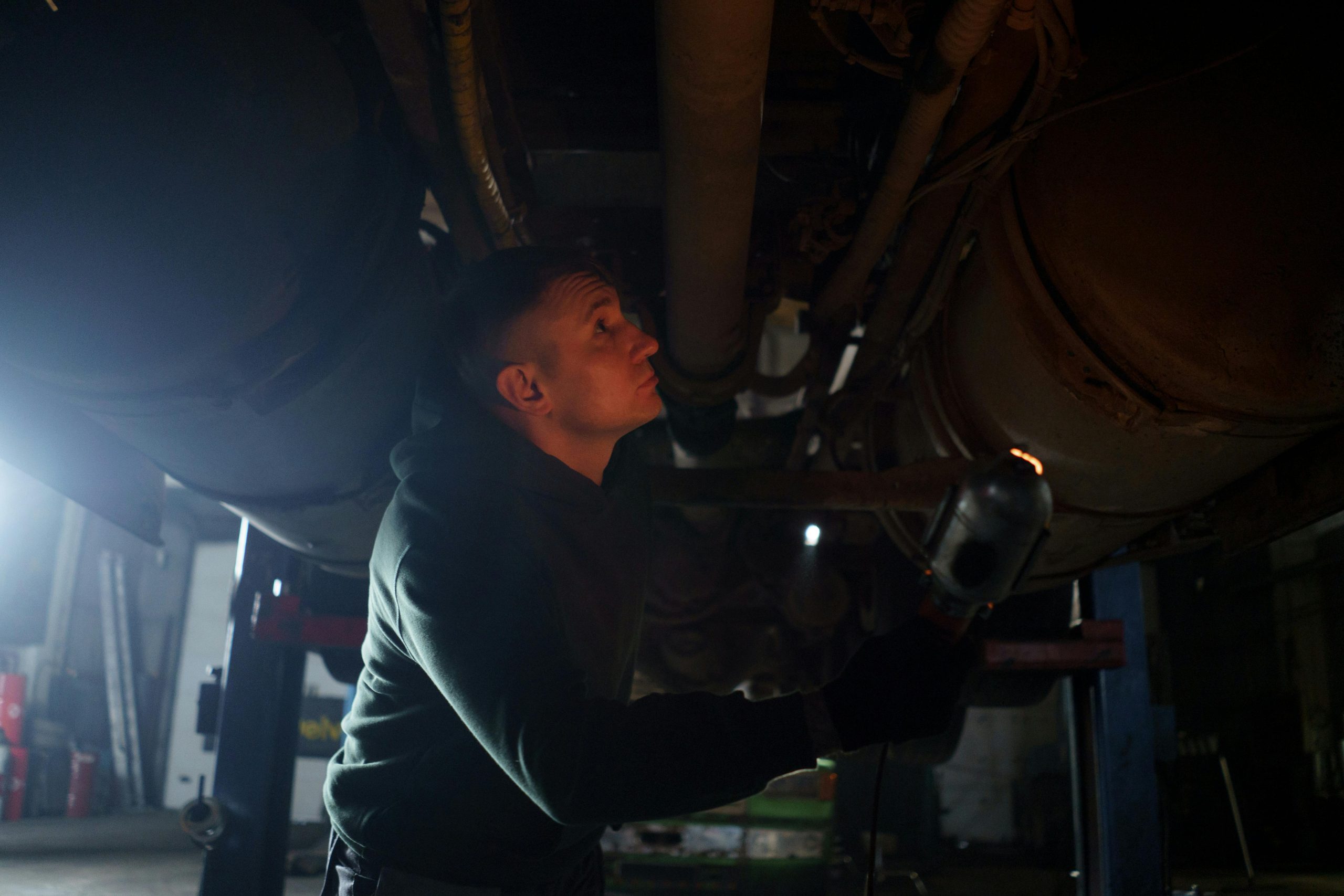Have you ever wondered why your car sounds like it’s auditioning for a part in a symphony of squeaks? You’re not alone, and pinpointing the source can be a puzzling endeavor.
Whether it’s during a sharp turn, a smooth ride, or even just starting the engine, identifying the right culprit requires a bit of detective work.
In this guide, you’ll learn how to use tools like a mechanic’s stethoscope and conduct tests that reveal whether issues lie in your belts, suspension, or perhaps the exhaust system.
But the real question is, once you’ve found the source, what will you discover about the health of your vehicle?
Identifying the Squeak Timing
To effectively diagnose the cause of squeaking noises in your car, start by timing when the squeak occurs. This initial step in squeak timing is essential for narrowing down the potential issues and fostering a sense of mastery in your car ownership journey.
If the squeaking noise emerges right when you start your vehicle, it’s likely related to the belts or pulleys. These components can wear out or become misaligned, and the timing of the noise helps confirm this suspicion.
On the other hand, if you notice the squeaking primarily when turning the steering wheel, this might indicate issues within your steering system, possibly due to insufficient lubrication or worn components.
A squeak during braking usually suggests that it’s time to check the brake pads or any loose components in the brake system. Each of these scenarios underscores the importance of squeak timing in identifying the cause of the noise.
Road Testing Your Vehicle
When you’re preparing for a test drive, it’s vital to create a checklist that includes all operational scenarios where the squeak might occur.
During the drive, you’ll need to pinpoint the noise sources, noting whether they arise during specific maneuvers such as sharp turns or sudden stops.
Analyze the driving conditions meticulously to determine if external factors like road textures contribute to the noise, aiding in accurate diagnosis and subsequent repairs.
Preparing for Test Drive
Make sure the engine is cold before starting your test drive to accurately pinpoint any high-pitched squeals indicating loose or worn fan belts. These squeaks aren’t just irritants; they’re potential harbingers of breakdowns, so it’s critical you don’t overlook them.
As a fellow car enthusiast, you know the importance of precise maintenance. Check the power steering fluid level; insufficient fluid can cause the steering to emit squeaking noises when turning. This is a common issue and often overlooked, but easily rectifiable.
It’s all about ensuring you’re part of a community that prides itself on flawless vehicle maintenance.
Inspect the condition of any new brake pads. Improperly installed or low-quality pads can produce a distinct squeaking noise that’s noticeable when you apply the brakes.
Before you head out, make certain your vehicle’s readiness by listening for any unusual noises while stationary. Engage and disengage the clutch, turn the steering from lock to lock, and rev the engine in neutral.
Identifying Noise Sources
After completing your stationary checks, you’ll now conduct a road test to identify when and where the squeaking noise occurs in your vehicle. Start by focusing on different driving maneuvers such as accelerating, braking, and turning.
Listen closely to determine if the squeaking noise intensifies or changes under these conditions. This approach will help pinpoint potential noise sources more effectively.
During your road test, pay special attention to whether the noise emanates from a specific area of your car, such as the front or rear. Identifying the location is essential for targeted troubleshooting later on.
It’s also helpful to vary your speed and the types of roads you drive on during the test. Different road conditions can influence the squeaking noise, altering its frequency or intensity.
Analyzing Driving Conditions
Conducting a road test allows you to precisely analyze how various driving conditions affect the squeaking noises in your vehicle. Start by noting when the noise occurs: during acceleration, braking, or turning. This step is essential to identify the mechanical actions that potentially exacerbate the issue.
As you drive, focus on the type of surfaces your vehicle encounters. Does the squeaking noise intensify on rough terrain or remain consistent on smooth roads? This observation can indicate whether the noise source is linked to the suspension system or if it’s perhaps a less obvious component reacting to specific road conditions.
Monitor the frequency and intensity of the squeaking as you alter your driving speed, steer in different directions, and apply brakes. Variations in the noise under these conditions can help pinpoint more precisely where the problem may be originating from.
Using a Mechanic’s Stethoscope
How can a mechanic’s stethoscope help you pinpoint the exact source of that persistent squeak in your car? This essential tool isn’t just for doctors; it’s a critical part of a car enthusiast’s arsenal.
When you’re dealing with elusive squeaking sounds, a mechanic’s stethoscope can be your best friend. It amplifies sounds, making it easier to diagnose issues hidden deep within your vehicle’s mechanics.
Imagine this: you’re hearing unusual noises that seem to be coming from your engine, but you can’t determine exactly where. The tool isolates sounds from each part, allowing you to pinpoint exactly where the problem lies without the interference of other vehicle noises.
It’s a bit like being a detective, but for cars. Each component you test whispers its condition to you through the stethoscope. This direct auditory feedback is invaluable. You’ll identify whether the squeak is from a belt, a bearing, or something else entirely.
Inspecting Suspected Parts
To tackle squeaking noises effectively, you’ll need to rigorously inspect various car components. Start by checking the brake components for any signs of wear or damage that could be emitting these sounds.
Assess the condition of all belts, ensuring they’re properly tensioned and not deteriorated, and evaluate the suspension system for compromised parts like bushings or shock absorbers.
Check Brake Components
Why do your brakes squeak when you drive? Often, the culprit lies in worn or improperly aligned brake components. To tackle this issue, start by inspecting your brake pads.
Check your brake rotors. Any signs of damage or uneven wear can be a major contributor to the noise. Rotors should have a smooth, flat surface. If you notice grooves or rough patches, it’s time to contemplate resurfacing or replacing the rotors to restore silent braking.
Don’t overlook the brake calipers. These should move freely and be well-lubricated. Sticky or seized calipers can cause the pads to rub continuously against the rotors, creating a squeak. Make sure they’re functioning correctly and lubricate where necessary.
Assess Belt Condition
Inspect your car’s serpentine belt for any signs of wear, such as cracks or looseness, which can cause a high-pitched squealing noise. It’s vital to check this belt thoroughly, as it’s responsible for driving multiple peripherals like the alternator and air conditioning compressor.
Assess the tension and alignment of your fan belt. This component, essential for your engine’s cooling system, must be properly fitted to avoid slippage and the resulting squeak. Use a tension gauge if available, or press lightly on the belt; it should deflect slightly but not excessively.
Don’t forget to examine the timing belt. A worn or loose timing belt can’t only squeak but also lead to severe engine damage if it fails. Check for any visible signs of deterioration and ensure it’s appropriately taut.
Inspect the pulleys associated with these belts. Any damage or wear can cause misalignment and unusual noises. Problems here can lead to squeaking, particularly during turns. Addressing these issues promptly can save you from more significant repairs down the line.
Checking the Exhaust System
Examine your car’s exhaust system for any signs of leaks, cracks, or damage that might be causing squeaking noises. Start by visually inspecting the system; look for any obvious signs of wear or breakage. This could include rusted areas or parts where the metal has become brittle and fragile. It’s important to check meticulously, as even small cracks can lead to bigger issues.
Pay special attention to the hangers. These components support the weight of the exhaust system and can fail due to rust or fatigue. If a hanger is loose or broken, it can cause the exhaust system to hang incorrectly, leading to movement and potential squeaking noises.
Similarly, inspect the heat shields. These are designed to protect your car from the high temperatures of the exhaust system. If they’re loose, they might rattle against other parts, creating squeaks.
You’ll also want to listen for any vibrations or rattles while the car is running. These sounds can indicate that something in the exhaust system isn’t secured properly.
Tightening Loose Components
To eliminate those irritating squeaks, you’ll need to tighten any loose belts, bolts, or suspension components in your vehicle. Addressing these loose components not only quells annoying squeaking noises but also enhances your car’s safety and performance.
Here are key steps for tightening loose components effectively:
- Inspect Belts: Check for any signs of wear or looseness in the belts. A properly tensioned belt should have about half an inch of give.
- Bolt Check: Use a torque wrench to guarantee all bolts, especially those in the suspension system, are tightened to the manufacturer’s specifications.
- Suspension Links: Focus on suspension links, which can often become loose and produce squeaks during driving.
- Consult the Manual: Always refer to your vehicle’s service manual for the exact specifications and tightening patterns.
- Seek Professional Help: If you’re unsure, it’s wise to seek professional assistance to avoid turning minor squeaks into major safety hazards.
Conclusion
Imagine you’re a detective, each squeak a whispering clue. You’ve mastered the art of pinpointing these elusive sounds in your car, from belts to bushings.
Just as a stethoscope reveals the heart’s murmurs, your tools and techniques uncover hidden issues. By tightening a bolt, you silence a noisy complaint, restoring peace. Your car runs smoother, quieter, proof of your diligence and skill.
Embrace this journey of discovery and maintenance, ensuring each ride is as serene as a silent night.
So, keep your vehicle in concert-ready condition and enjoy the symphony of the road. For any auto repair needs, you can contact HTC Automotive at 303-443-0145 or 970-431-6222.



